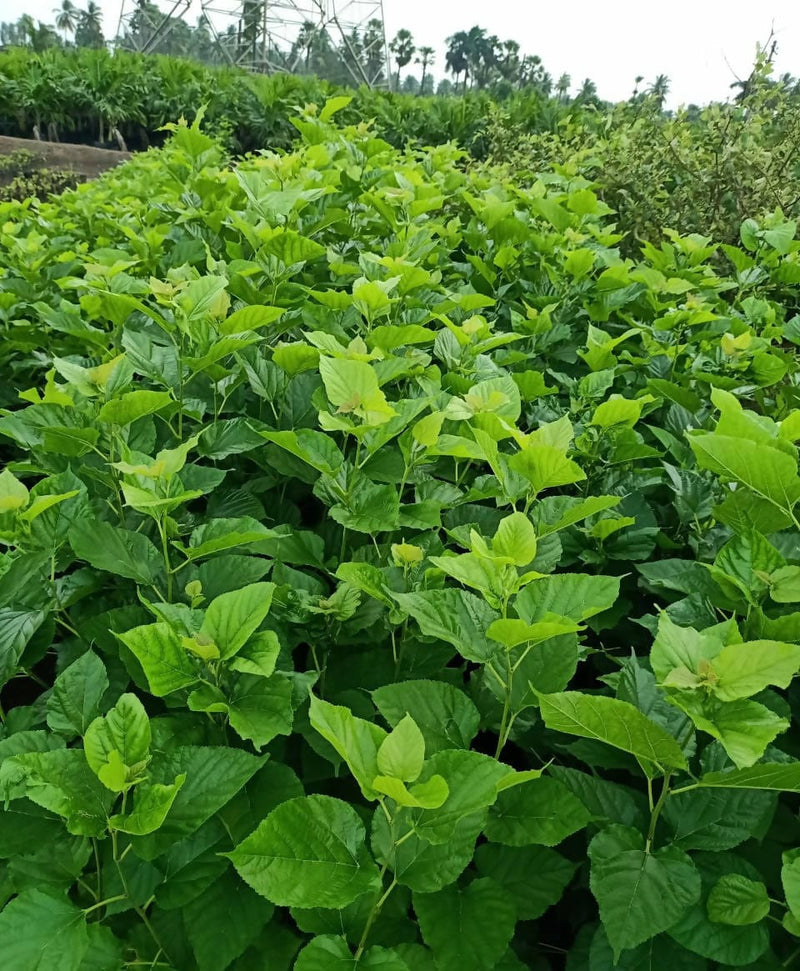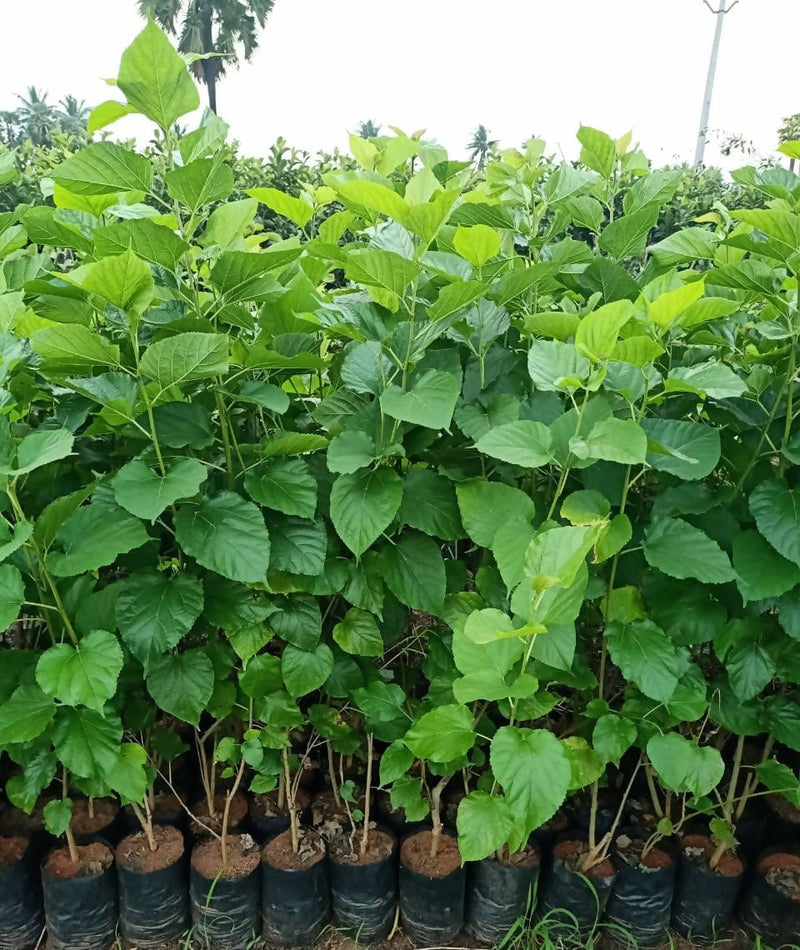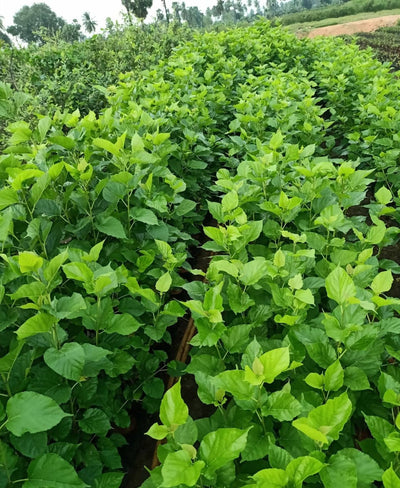Mulberry Fruit Plant
Growing mulberry plants is a simple method to give your landscape a tropical feel. You will be rewarded with many years of lovely, sweet fruits if you understand the significance of mulberry leaves and fruits and how to take care of mulberry bushes.
- Among the most beautiful and nutrient-dense fruit plants.
- Low care and simple to grow plant.
- The ideal plant for outside.
- The fruits and blossoms are missing from this product at the time of shipping. The plant will thereafter bloom and produce the exquisite fruits.
Known as mulberries, Morus is a genus of flowering plants in the family Moraceae. It is a small, quickly growing tree that grows both naturally and in cultivation in many temperate regions of India.
Common Name - Shahtoot, Mulberry, Tuti.
Maximum Height - Up to 18 meter
Flower Colour - White
Bloom Time - August-October and February-May
Difficulty Level - Easy
Planting and care
Remove any damaged, diseased, or dead plant components, and dispose of them far from the living plants.
Use a spray of neem oil, eucalyptus oil, or citrus oil as the first line of defense against any disease or insect attack.
Don'ts
Don't water the plant excessively.
Applying water in the midst of a hot afternoon could result in fungal infection.
Sunlight - Natural bright light with morning sunlight(more than 6 hours)
Watering - Apply4cup(approx.200ml) of water when the top soil (1-2 inch) in the pot feels dry to touch
Soil - Well drained, fertile and rich in organic content
Temperature - 20-28 Degree Celsius
Fertilizer - Apply organic fertilizer once a month during the main growing season (August-October and February-March)
Harvest Season - October-December and June-July
Mulberry uses
Ornamental Use
Mulberry plants are primarily utilized for their big foliage and occasionally as plants that provide shade.
Medicinal uses
In addition to being used to prevent atherosclerosis, liver and renal diseases, inflammation, and premature ageing, mulberry fruits, roots, and leaves are also commonly used to treat these conditions.
Culinary Use
Used to prepare marmalade and sherbet, mulberries are used in herbal teas, pies, tarts, wines, and cordials.
NOTE
Images are for reference; the original product may vary in shape and size.








